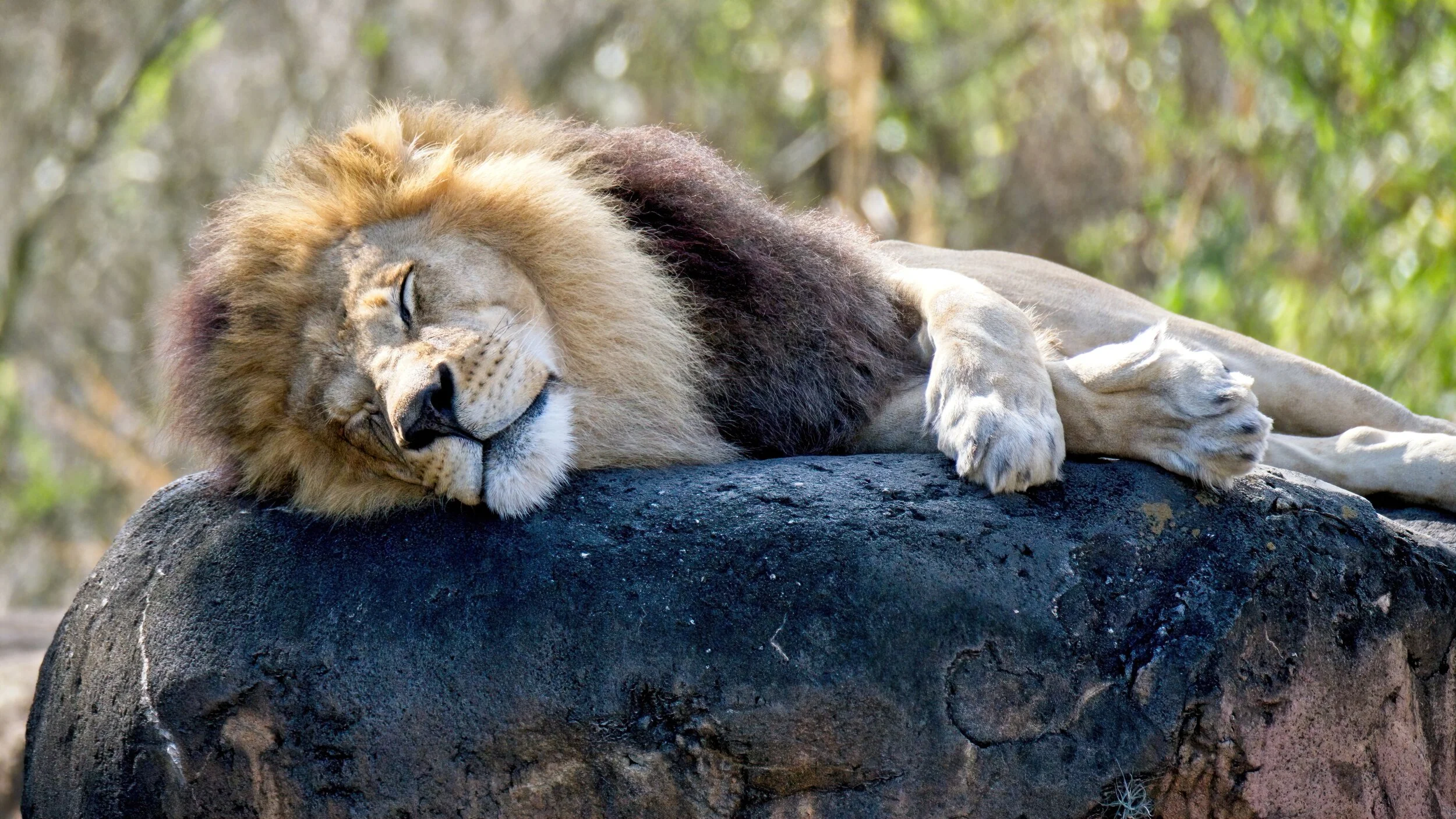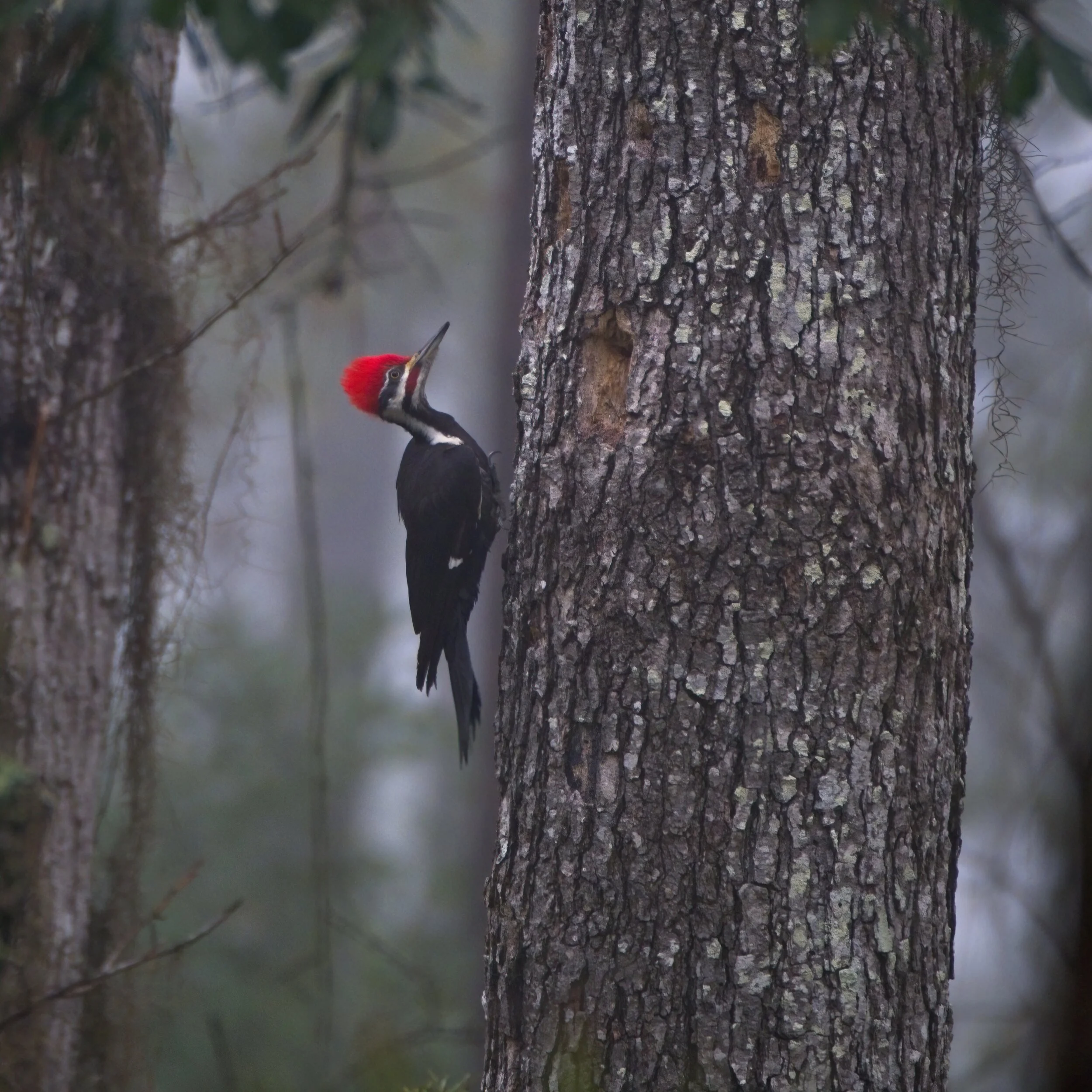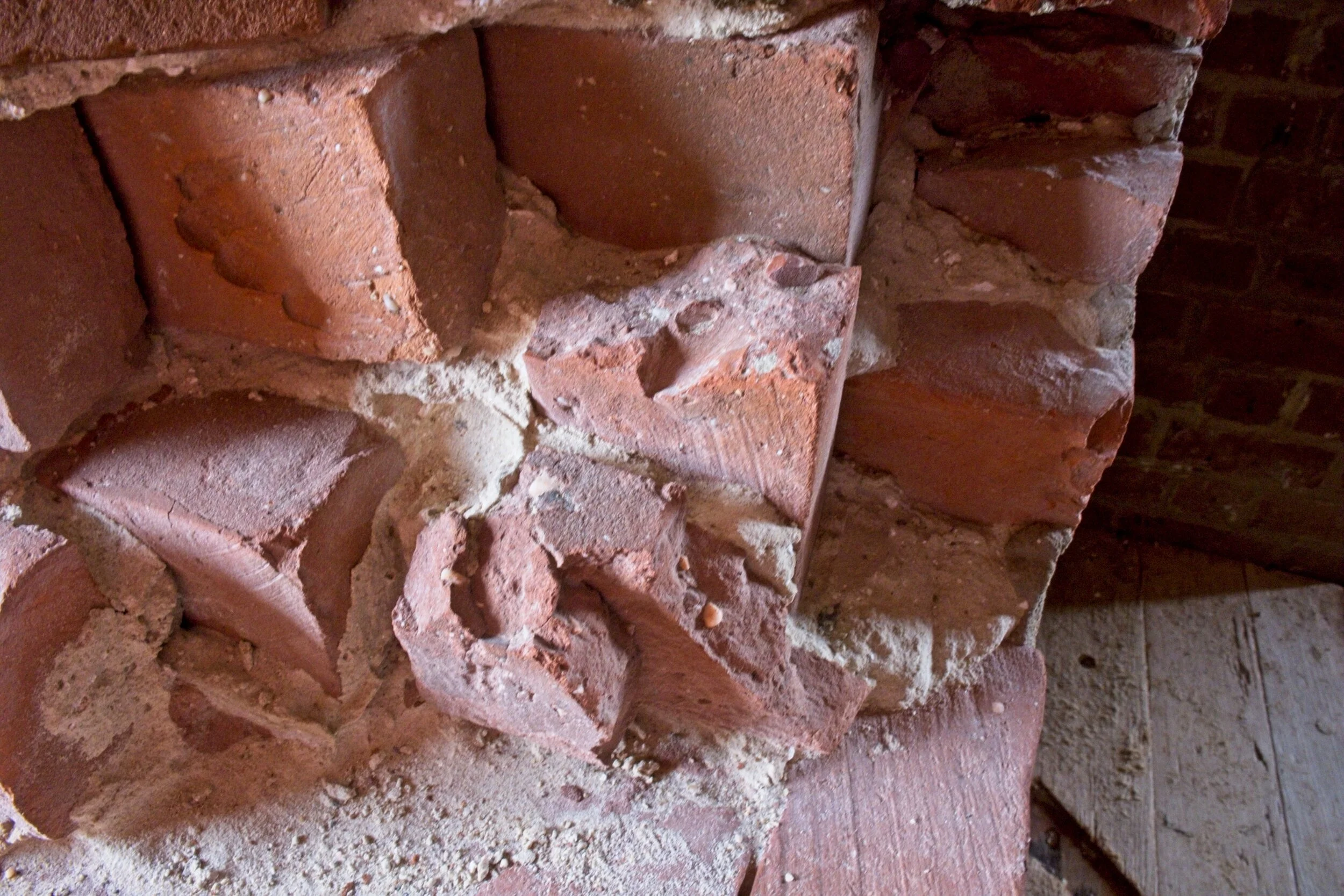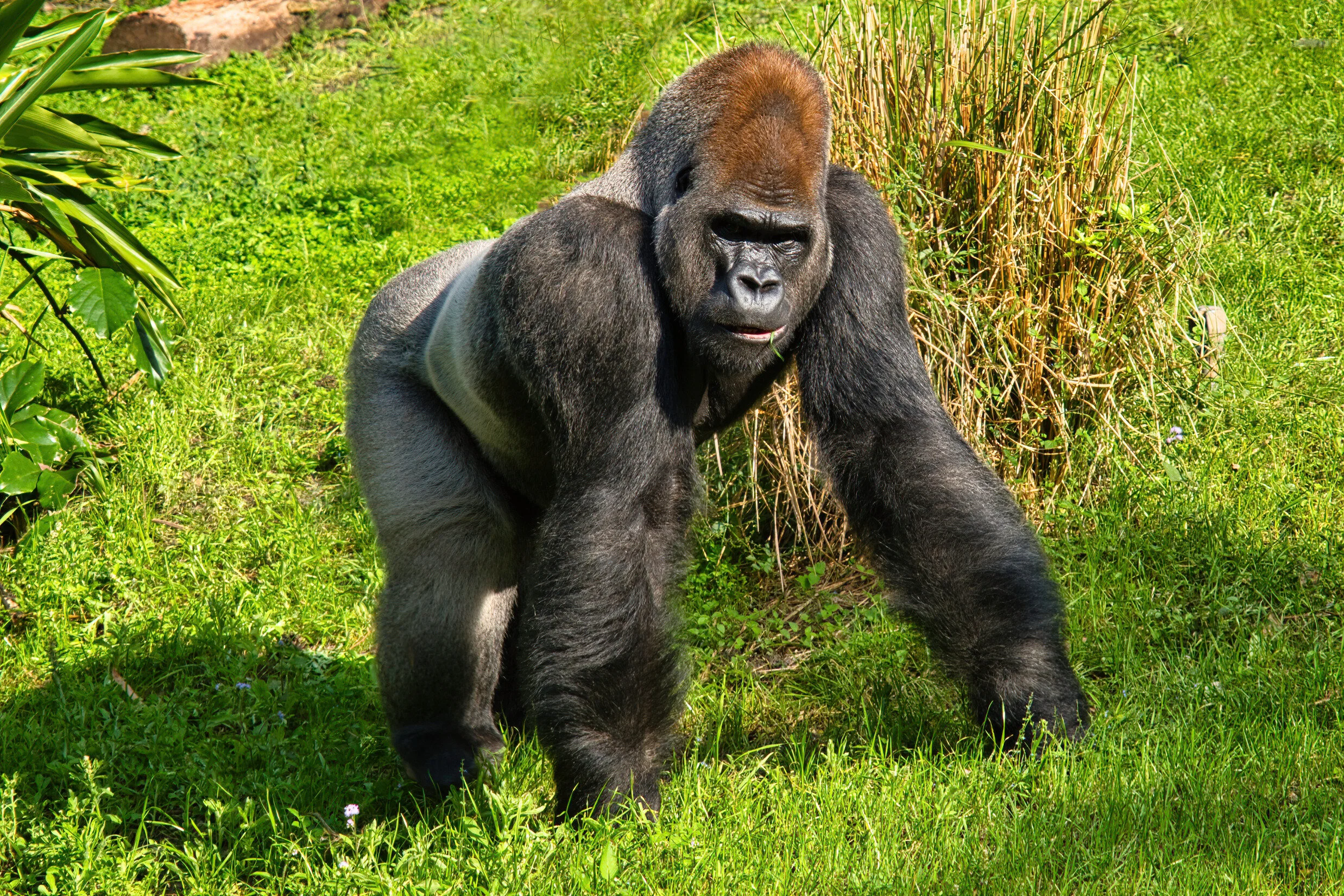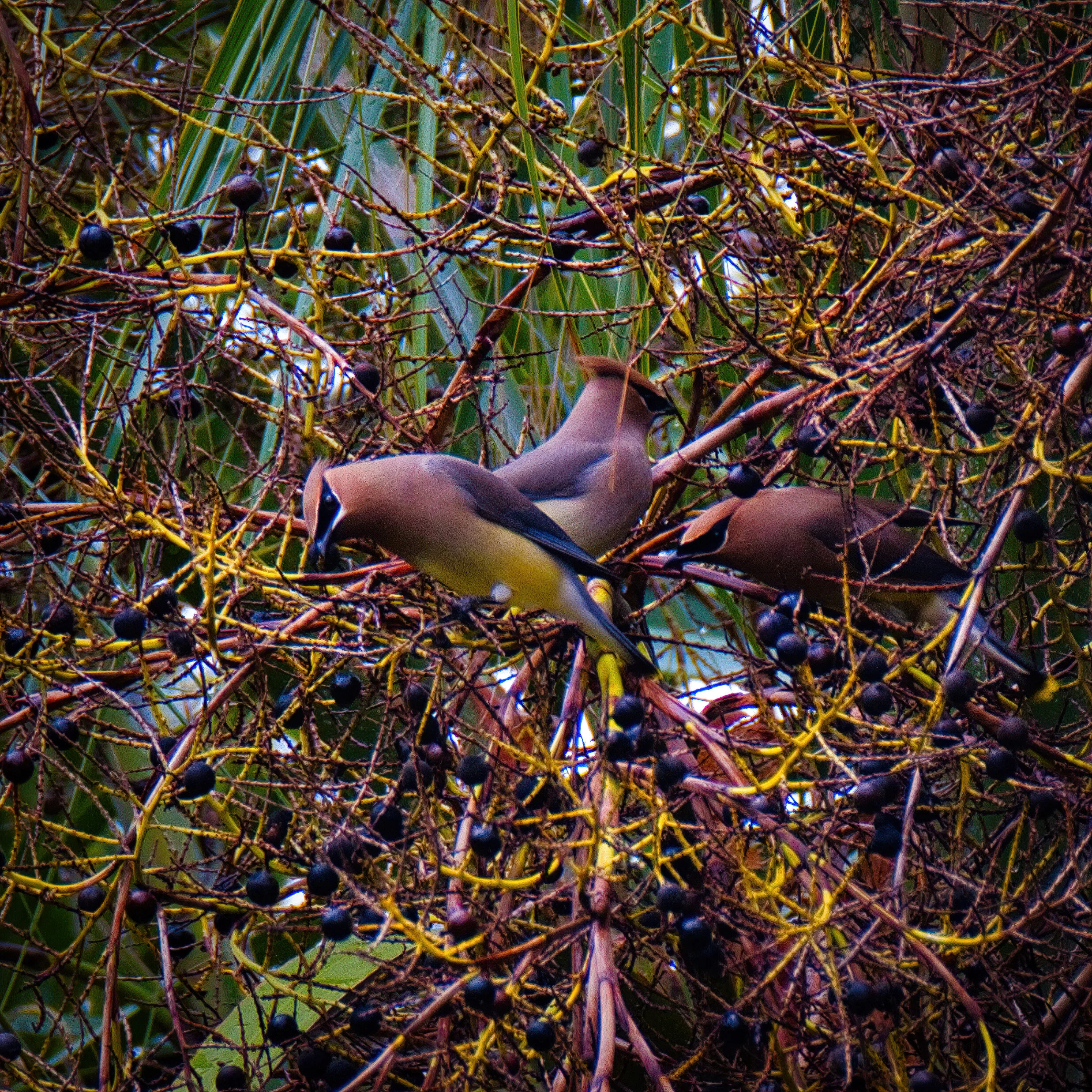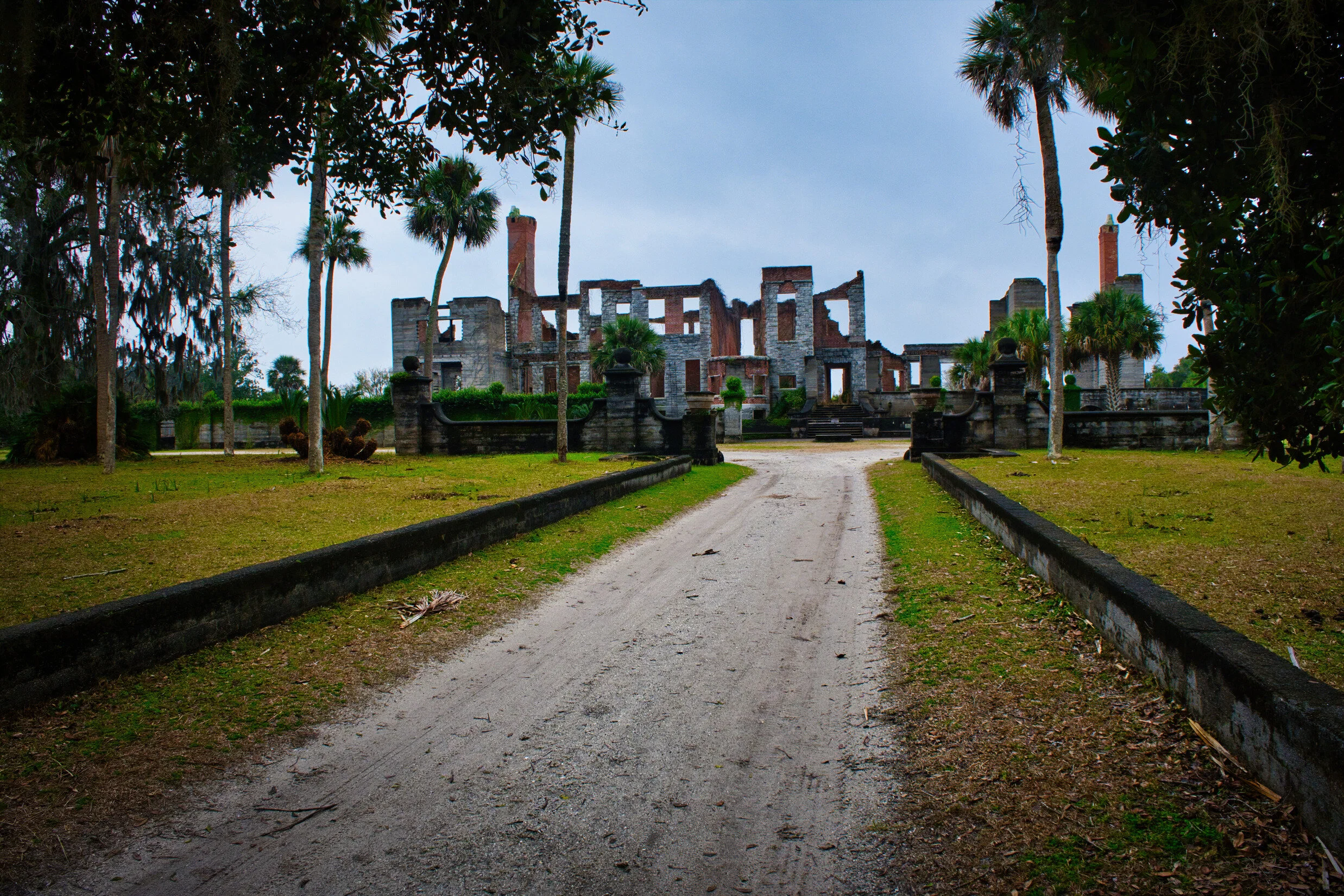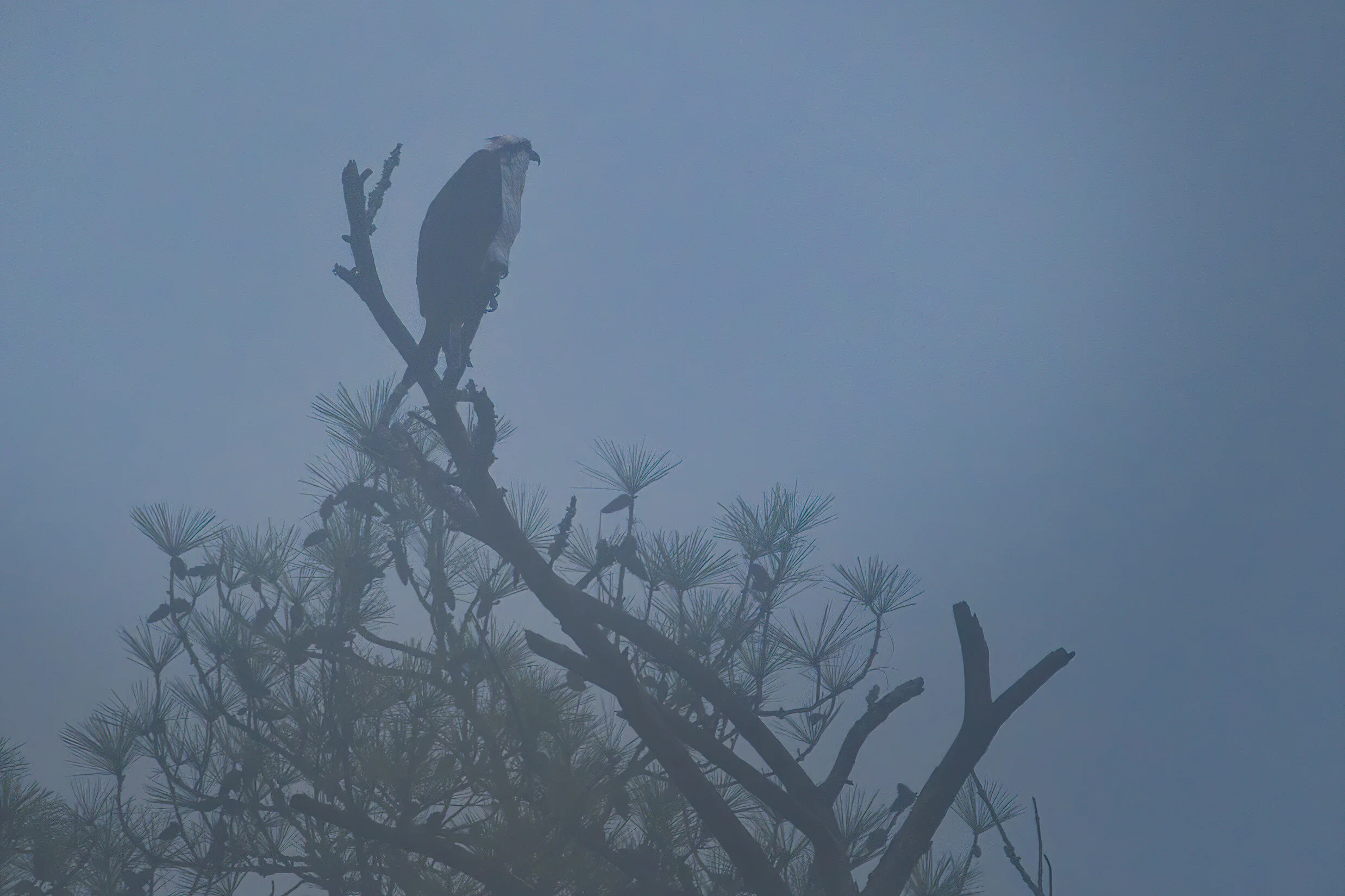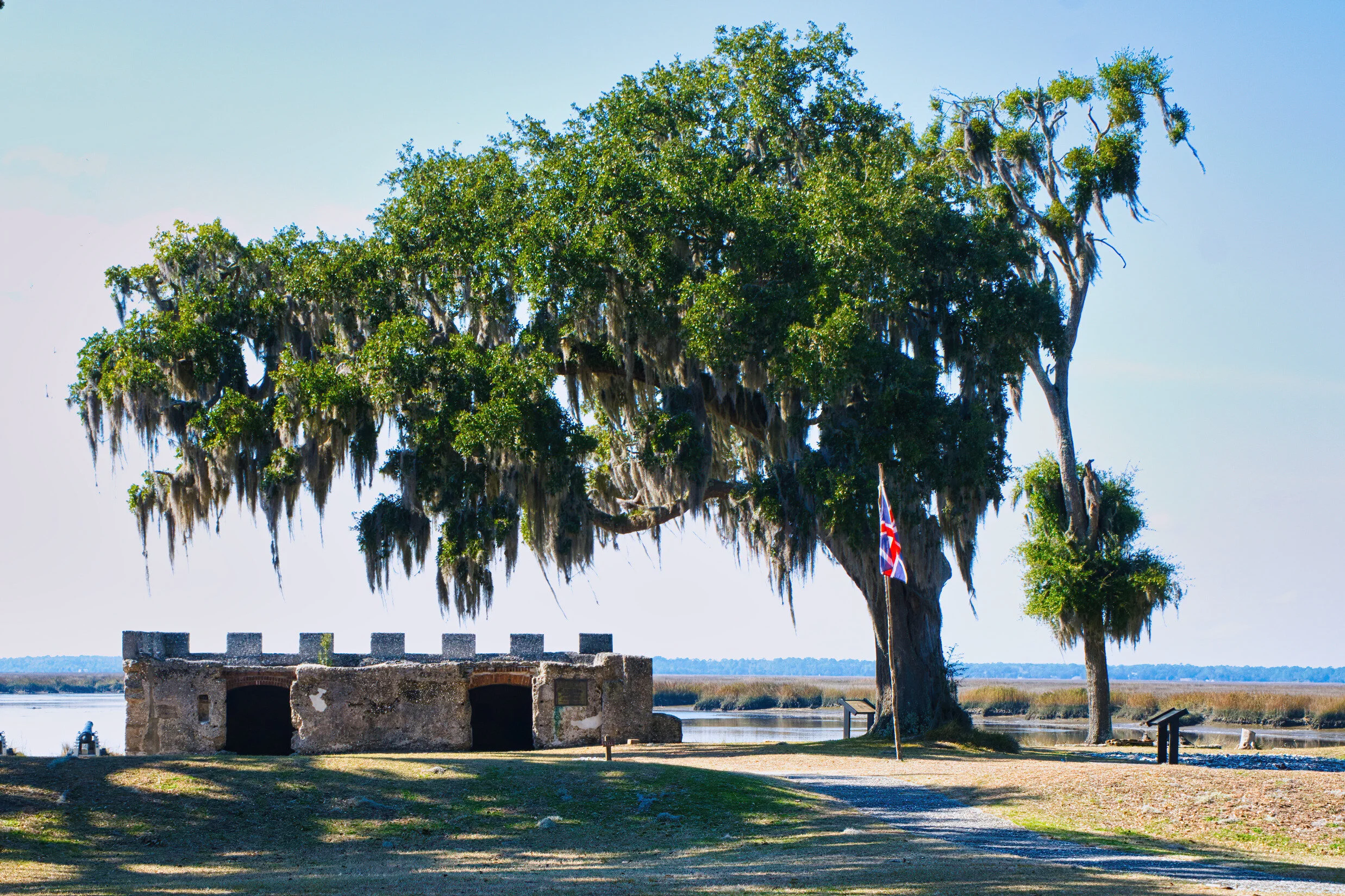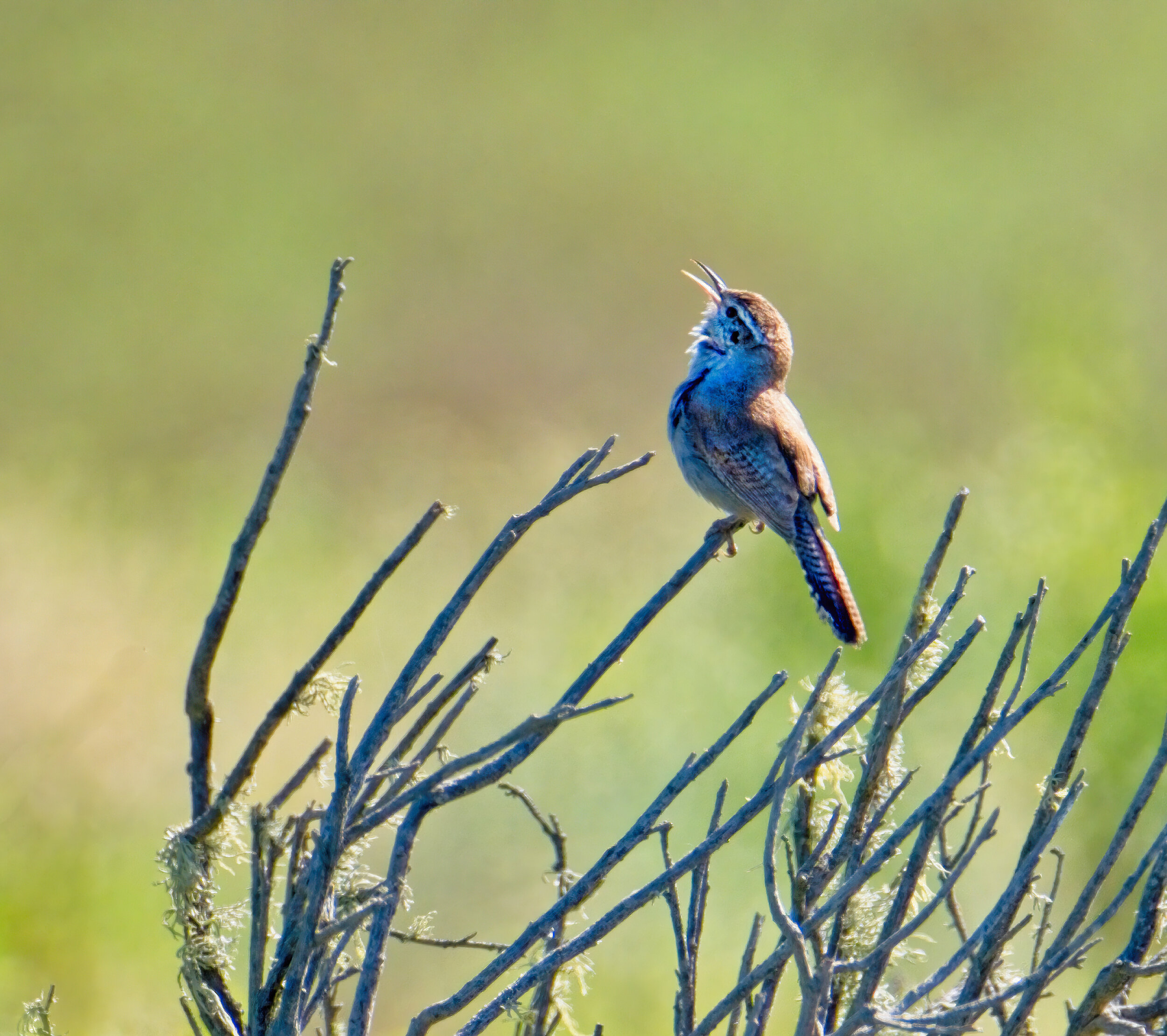In the jungle, the mighty jungle
The lion sleeps tonight
In the jungle, the quiet jungle
The lion sleeps tonight
Deep /
Well into a coastal forest we came upon this Pileated Woodpecker. If you notice the patch of bark missing near his beak, it is where he was chiseling away with the distinctive squared holes that mark their feeding areas. This is a rather new one as it only has the outer layer removed so far. These are big, crow sized, beautiful birds that sound a bit like the background birds in the old Tarzan TV series- which I expect has something to do with where it was filmed! This one was striking in the dark, moist forest.
Still Working (2 photos) /
Fort Pulaski was constructed in the early 1800’s and quickly overtaken by Union technology in 1862 with the advent of rifled cannon. Yet the maintenance still goes on. Thankfully. It is difficult to keep up this brick fort built partially with slave labor bricks from SC and partially from bricks made in the Northeast. The northern bricks were made with different clay and could be hardened. Here a park service maintenance person works to remove some of the old morter preparing the bricks for repointing. When they removed some bricks the ones not seen had finger prints and thumb marks in the bricks, showing the hand labor required. Those bricks were always facing in or covered with a second layer brick.
several fingerprints are visible in these exposed bricks that were once hidden behind a second layer.
Lunch Money /
“Sure, Moe, I don’t need to buy lunch today, right, or ice cream. I’m really not hungry so you can have my lunch money.” (Ya big gorilla)
inspired by Bill Watterson
Tree /
It is hard in the midst of a forest to see the individual tress but and on Cumberland Island they are breathtaking. High canopy, twisty dark branches all draped with moss and dripping with rain- of course it was raining. Still what a glorious place. I liked this tree that framed a tree. The palms are between 4 and 6 feet tall so I had to wade in about 30 feet to get a clear shot.
“The seeds of good deeds become a tree of life; a wise person wins friends. Proverbs 11:30 NLT
Dancing /
Chip and Dale helping us celebrate our 50th year of marriage at Disney.
Trio /
There were actually six of these Cedar Waxwings in the photo but I cropped it down to the three in the middle. This is on the last of the trees behind the Dungeness mansion ruins on Cumberland Island. The rain was starting to increase at this point so we turned around to go back up the “main” road toward the dock. It was not a great day for a 5 mile hike around the island but it is the time we had. I would love to go back and rent bikes on a more clear day. We stayed at a nice state park nearby so it seems reasonable to try again one winter day and simply wait for a good one from the CG.
Dungeness on Cumberland Island NS -park #218 /
On the southern end of Cumberland Island National Seashore is the ruins of Dungeness. This palatial home was built on the foundations of an earlier home built by the widow of General Greene of Revolutionary fame. That home burned in the mid 1800’s and Thomas Carnegie, at the encouragement of his wife Lucy, built this home when he purchased 7000 acres of the island. He died shortly after and she lived here for 40 more years making a self-sufficient community and building homes for her children on parts of the island. This home burned in 1959. The park service has 3800 acres of designated wilderness and the National Seashore comprising a large portion of the southern end of the island. There are still some private owned homes and land scattered across the island.
Over the Crooked River in Southern Georgia /
The sunset was pretty between rain storms along the river. We could not get the best angle because the fence kept you back about 30 feet from the fragile cliff.
Foggy Hunter /
We camped for a night at Skidaway State Park in Georgia. In the morning before we left heading south we took a 1.7 mile trail in the marsh under a dense layer of fog. At one point because of all the rain we were in water about 6 inches across deep across the trail and that lead to damp socks! In a tree about 75 yards away we spotted this Osprey. The fog was so thick it was difficult to see him. Still the silent morning would be broken when he finally spotted some breakfast in the murky water below.
Fort Frederica /
Oglethrope established this fort and town south of Savannah about 50 miles to protect the main colony from the Spanish. At its peak it had a garrison of 200 soldiers and more than 500 residents. All that is left are foundations and this crenelated magazine. The cannon for the fort were in bastions to both sides of this structure facing the water. The outpost worked as planned. Tthe Spanish attacked in 1742 and were defeated a mile or two south of the main fort in a surprise ambush. They never returned.
It is interesting to see what remains after neglect, hurricanes and fires of what was once a critical place in the defense of the experiment Oglethrope established. The evidence of the Wesleys who came with him has endured better in this area of Georgia than the town and fort of Frederica. This was not a new national park site for us but the first time I photographed it.
Still The One /
(you're still the one)
You're still the one I run to
The one that I belong to
You're still the one I want for life
(you're still the one)
You're still the one that I love
The only one I dream of
You're still the one I kiss good night.
Happy Valentines Day - Year of 50!
Fort Pulaski - National Park Service #280 for TLT /
Just a bit east of Savanah, GA on an island in the river is Fort Pulaski, a 3rd defense fort. It commanded the approach to Savanah from the ocean and was built in the early 1800’s. State of the art for its day. Then in April of. 1862 the Union unlimbered several new type cannon on Tybee Island about a mile away from the fort and they started to shell the fort. 30 hours lager the garrison surrendered. The new cannon with rifled barrels breached the fort at two places and the magazine was almost exposed. These scars are from the short battle that rendered most of the brick defenses moot.
Just a Quick Update on Another Activity (2 photos) /
I finished these four in early January. The Blue Moose went to Georgia where he has enjoyed both rainy nights and a great family who lets him listen to jazz and feeds him excellent cookies. The Formal Dress Penguin is in central Florida living well in a freezer and being taken care of expertly by ex-Sea World folks. The Swim Suit Moose is now living in rural Washington state and loving his young keeper. The NCSU Snowman is yet to be delivered. Then with arthritis flaring up a bit no carving took place for about three weeks but that has eased and I just finished the Leprechaun. He will stay here as I keep the mistakes of the first one at home! Started on a second just before we left. More projects on the way as I try to do a few people-based characters. All of these carvings start with a 1” x 1” X 3” block of wood.
May 8, 1971 /
We left the Comus Inn just a bit south of Frederick, MD in our 1971 orange Super Beetle for a honeymoon that began in Williamsburg, Virginia. On Wednesday we left in our Toyota pulling the travel trailer for Florida to celebrate our 50th anniversary. But you say it is still February. Right but this event could not be scheduled at another time, so we will have more than one celebration and that is ok with me.
Cactus Wren /
Another processing of an older photograph this one for the first time. I shot this Cactus Wren along the California coast, about 300 yards from the ocean atop a slight cliff. I was looking for the path down to the beach when this bird hopped up out of the scrub less than 10 feet away and began to sing. It was a neat moment.
Yes it is. /
So I shot this image at Disney Animal Kingdom. It was underwater and the glass was thick with a green tint. The animal was 50 feet away. For the longest time I couldn’t get this to look anything close to a natural color but recently with newer software I was able to coax this out of the RAW file and it is not too bad. Anyway, it was a great memory from a day in that park.
Graffiti /
I came across this work about two blocks from the old Federal Building in lower Manhattan.
Flat Plane Photography .7 /
At the end of this week long series is the photo that started it all. I found myself on a path that was simply covered in these bright red maybe maple leaves and they were just beautiful. It was a cool moment when everything appeared to be red above, under and beside me.
“Worship the Lord in all his holy splendor. Let all the earth tremble before him. Tell all the nations, “The Lord reigns! The world stands firm and cannot be shaken. He will judge all peoples fairly.” Psalm 96: 9,10 NLT
Flat Plane Photography .6 /
This shot is from a hike in Acadia National Park. CJH and I did one of if not the last peak that we had not done. It was Pemetic Mountain a 1250 foot peak and the hike was along the eastern side of Jordan Pond. In Acadia the south slopes of the mountains are more gradual and easier to climb than the northern approaches. I knew this. But after we ascended to the top from the south, a longer climb, I suggested that we go back off the northern side toward Bubble Pond. In a short while, we were on a very steep climb with lots of loose rock and scrubby trees and branches. It was a chore. About 3/4 down there was a large flat rocky spot that was covered with low grasses and the bright red leaves of wild blueberry bushes poking out. I made a great show of taking this photo. What I really was doing was getting a rest. We - obviously - made it down and took the long way back to the car. Lesson: South slope to ascend, South slope to descend. Got it.

